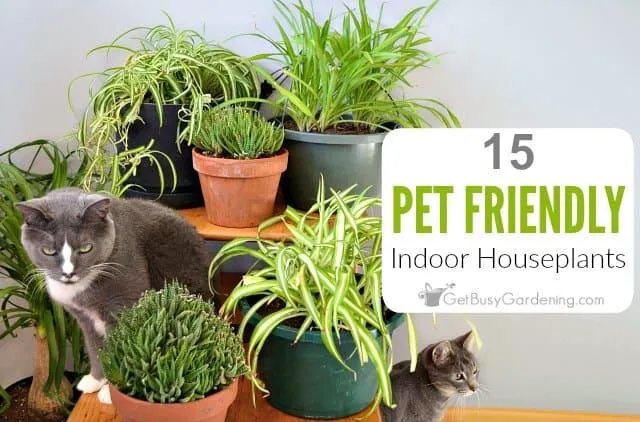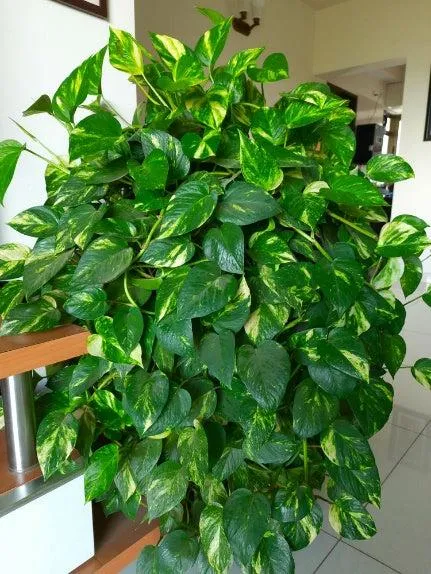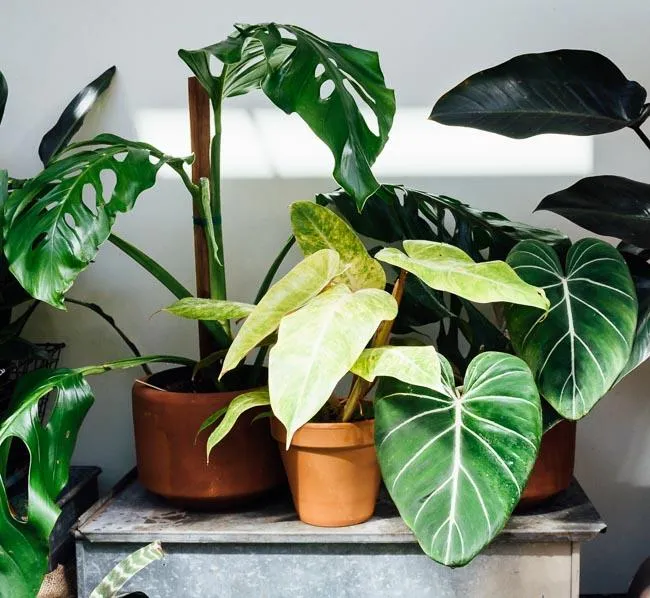The Ultimate Guide to House Plants That Are Safe for Cats and Dogs
If you share your home with furry friends, finding plants that won’t harm curious cats or dogs can be tricky. In this article, I’ll break down over 20 common houseplants and whether they’re a safe or unsafe choice when pets are around. From my experience as a pet owner, providing a few safe greenery options can enrich your pet’s environment without risk. Let’s get started!
Safe Plant Picks for Pet Parents
- Peace Lilies: These graceful white blooms are non-toxic to pets. I have a peace lily in my home that my cat loves sleeping next to without incident. Their waxy leaves are not very appealing for chewing either.
- Spider Plants: With their long, arching green leaves spotted with tiny white flowers, spider plants are kinda aesthetically pleasing. They are also completely non-toxic and difficult for pets to ingest due to their tough texture. A solid choice for animal companions.
- Snake Plants: Also called mother-in-law’s tongue, snake plants are resilient and pet-friendly. Their strappy leaves are too thick and leathery to chew or eat. Plus, their name exemplifies how they basically slither out of harm’s way! Great for distracted pet parents.
At the same time, plenty of other common houseplants fall into the greenlight zone for safety. Depending on your pet’s tendencies, pothos, Chinese evergreen, parlour palm, bamboo palm, and philodendron are generally considered non-toxic selections. Some, like English ivy, are even rumored to purify indoor air. So in summary – if Fido or Fluffy shows mild interest but doesn’t gobble these greens, they’re suitable options.
Plants to Avoid
While most greenery poses no threat in small amounts, certain varieties can induce unpleasant symptoms if consumed by pets. Here are some toxic types to steer clear of or place up high:
- Lilies: All types of lilies, like Easter and tiger lilies, can damage a cat’s kidneys even after ingesting just a few leaves or petals. Kind of a bummer since they are so pretty. It’s best to keep these plants out of a cat home altogether.
- Dieffenbachia: Also known as dumb cane, this plant contains calcium oxalate crystals that irritate mucous membranes in the mouth and cause swelling of the lips, tongue and throat if eaten. I do not recommend unless up high and secure.
- Elephant Ear: While cool and tropical-looking, philodendron and other “elephant ear” plants contain calcium oxalate crystals and can induce vomiting or drooling. Personally, I’d find an alternative for pet safety.
Marijuana, aloe vera (unless labeled for internal use), and poisonous berries or bulbs like hydrangeas, tulips and narcissus are additional no-gos. The same goes for common pothos varieties with variegated leaves containing insoluble calcium oxalate crystals. Also, certain houseplant fertilizers and soil amendments can induce stomach upsets if ingested. So keep these items stored securely too.
From my experience, the key is choosing plants that are unappealing for chewing yet uphold an enriching indoor atmosphere. With so many beautiful non-toxic varieties, settling on pet-safe greenery is totally doable – as long as diligent monitoring occurs sort of kind of at first until preferences are established. Dogs may find soil and pots most alluring anyways!

Creating a Pet-Proof Green Home
Mistakes happen, so taking preventative measures offers peace of mind for all. Here are some additional tips I’ve picked up having furry roommates myself:
- Place poisonous plants out of reach, like on high shelves well above curious paws and noses.
- Cover soil surfaces with decorative stones so it’s less appealing to paw at or eat. But beware if decorative stones are too small and could pose a choking hazard.
- Pot toxic plants in containers with holes too small for little faces to shove inside. Larger terra cotta planters could be chewed or licked instead.
- Inspect leaf litter underneath potted plants that may have fallen and be accidentally eaten during playtime.
- Install a plant barrier like an acrylic screen for furry friends to see greenery without mouth access.
- Coordinate with pet sitters or walkers on plant safety before leaving town.
With some preventive measures and dedicated pet-proofing, houseplants can add style without posing stomachaches. Does this help clear up what’s basically safe and not safe for cat and dog companions? Let me know if any other questions come up!
When in Doubt, Toss or Relocate a Plant
On the flip side, pets will be pets – and accidents tend to happen regardless of caution. Sometimes even “non-toxic” varieties pose issues due to individual pet physiology. If just a nibble occurs, you may notice drooling, vomiting or diarrhea within a couple hours as main warning signs.
Rather than waiting to see side effects develop, I’d suggest removing visible plant access stat and contacting an animal poison control hotline ASAP in case medical treatment is needed. Better safe than sorry, right? Here’s a real life case example I faced with my once cheery cat Marshmallow:
One morning I woke to finds Mars had puked all over – with green flecks that matched my pothos leaves. After an emergency vet visit confirmed mild tummy upset and decontamination meds, I had to face moving the plant for good. It was an expensive but important lesson that in some cases, removal trumps attempted prevention. My feline friend avoided major risks, thankfully!

So in summary – match greenery to pets carefully, take precautions if necessary, but don’t be afraid to toss whole plants that pose iffy risks down the road. A happy, healthy animal companion is so worth sacrificing one “perfect” indoor plant selection, in my opinion. Safety comes before decorative priorities whenever fur babies are involved.
Did any of these rambling plant safety tips help inspire ideas for your own pet-friendly indoor gardening setup? Let me know if you have any other questions! I’ll do my best to give guidance that prevents sick pets from needing vet cuddles. With some trial and error, pet owners can still indulge plant parenthood safely.
Houseplants Safe for Cats and Dogs
| Plant Name | Toxicity Level | Care Requirements |
|---|---|---|
| Snake plant | Non-toxic | Low water, tolerates low light |
| Pothos | Non-toxic | Low water, tolerates low and indirect light |
| Chinese evergreen | Low toxicity | Medium light, keep soil slightly moist |
| Peace lily | Low toxicity | Medium light, keep soil moist |
| ZZ plant | Non-toxic | Low water, tolerates low light and dry conditions |
FAQ
-
Are all house plants safe for cats and dogs?
Basically no, not all house plants are safe if ingested by pets. Some common houseplants are poisonous to cats and dogs. It’s important to research which plants are toxic before bringing them into a home with pets.
-
Which popular houseplants are unsafe?
Some plants which seem like nice decoration but should be kept out of pet’s reach are lilies, philodendron, aloe, euphorbia, and poinsettia. The toxic parts of these plants can cause irritation or worse if pets eat them. Even small amounts could be dangerous to small animals.

-
Are any safe succulents and cacti for pets?
Yes indeed, some succulents and cacti types are fine for curious cats and dogs. Snake plant and spider plant appear to not be toxic to pets despite looking prickly. As long as furry friends don’t nibble too much, sansevieria and chlorophytum may be sort of okay to have around. Just in case though, keep an eye on those sharp pointy edges!
-
What plants are considered pet-friendly?
English ivy, peace lily, bamboo palm, and pothos ivy top the list of plants that are generally unappetizing to pets, even if they somehow manage to eat some. Spider plants, Chinese evergreens, and hearty gerbera daisies also appear to be basically harmless to fur babies according to many experts. Ask your vet if you’re not certain!
-
Should I do anything to pet-proof plants?
Yup, it’s always a good idea to do what you can to discourage nibbling just in case. Try putting bitter apple spray or hot sauce on plants that are irresistible to chew. And use heavy pot saucers or plant stakes to keep pots elevated and stabilized. Maybe the climbing plants will stay high enough to avoid temptation! On the other hand, make sure kitty’s scratching posts provide fun alternatives too.
-
What are some natural plant-safe deterrents?
Citrus peels scattered around plants may help keep pets away since many dislike the tangy smell. Strong mint and lavender herbs are one option to maybe confuse their sense of smell. Essential oils on cotton balls near plants could perhaps distract animals to something else. Be cautious as some pets are sensitive to essential oils though. Coffee grounds around plants may also disgust dogs and cats, according to some reports.
-
Should I remove all plants if a pet gets sick?
If a pet shows any signs of digestive issues like vomiting after being around certain plants, it’s best to play it safe and get rid of not just that plant but others that may have touched its leaves or soil. Take any uneaten plant material to the vet right away too. Monitor your furry friend closely for 24 hours and call the vet as soon as possible if symptoms appear. Remember – prevention is better than cure when it comes to poisonous plants! Your pet’s wellbeing comes before any decor.

As you can see from the FAQ, some plants are safer than others when living with curious cats and dogs. Do your research and get your vet’s advice before scattering houseplants around your home. With a few precautions, you may find that some greenery is fine to have. But be certain to keep any toxic plants totally inaccessible to your furry friends. Their safety should always come first in any home.
